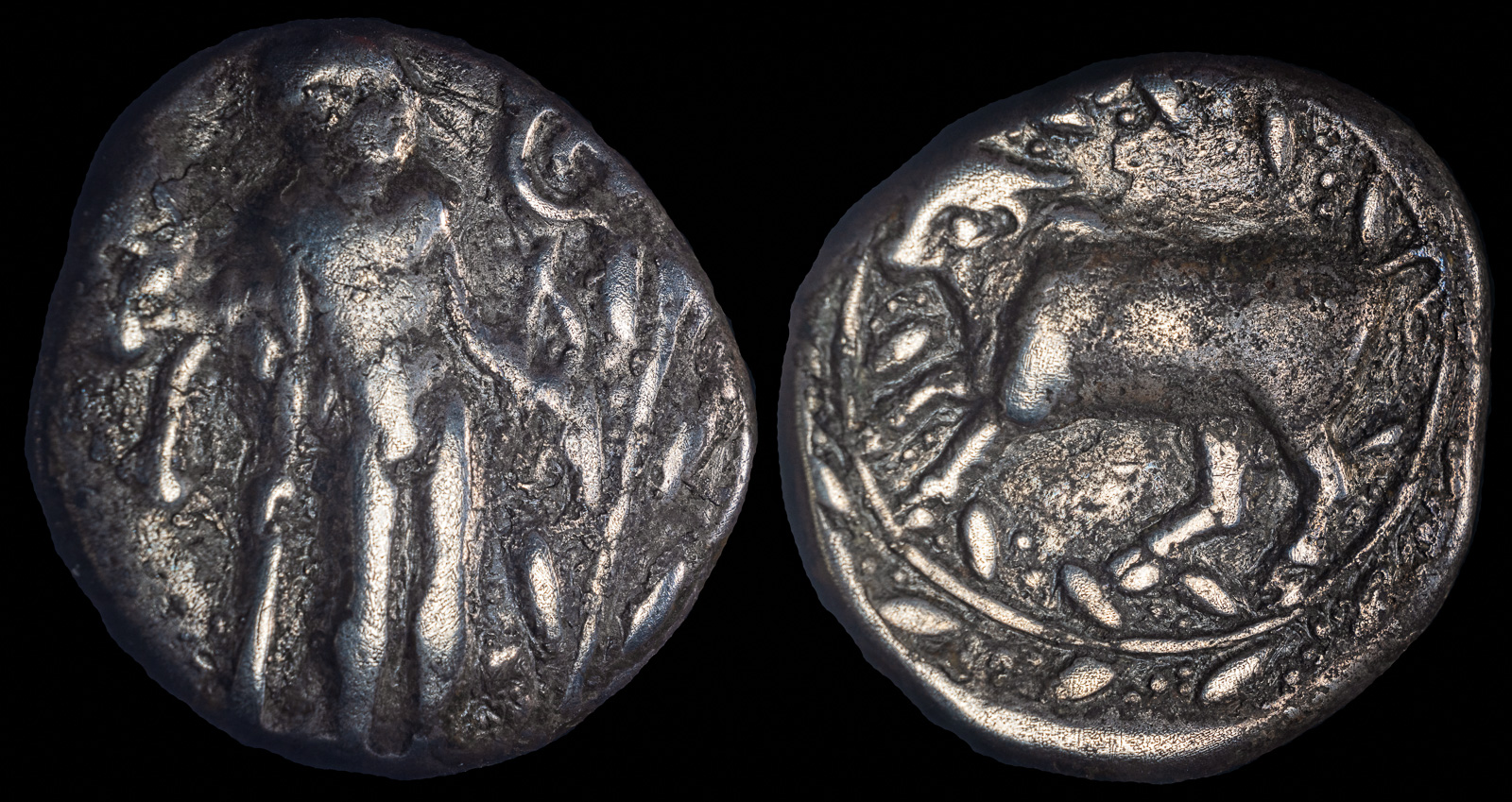
Circa 330-320 BCE
AR Stater 23 mm, 11.84 g, 11 h
Herakles standing front, head to right, resting his right hand on club set on ground and holding bow in his left; to left, lion’s skin hanging from tree; to right, coiled serpent above laurel branch.
Rev. Bull walking to left; all within laurel wreath.
Le Rider, Crétoises, pl. III, 22 (same obverse die). Svoronos, Numismatique, 17. SNG Copenhagen 512
Ex CNG 2022
Ex Trausnitz Collection
Ex Obolos 2021
Ex Künker 2005
Ex Künker October 2001
This coin is such a classic in my opinion with the image of Herakles on one side with the lion’s skin hanging from a tree – a symbol of his defeat of the Nemean Lion – and then the bull on the other side.
Phaistos, like many of the other cities on Crete, is extremely ancient. Archeological evidence points to habitation from 3600 BCE and a number of Mycenaean structures remain.
Homer mentioned that Phaistos participated in the Trojan War. Per mythology, the founder of the city was Phaistos, a son of Herakles. The mythical king Rhadamanthus, who became one of the judges of the dead, ruled over Phaistos.
In the 3rd century BCE, Phaistos was destroyed by Gortyna.